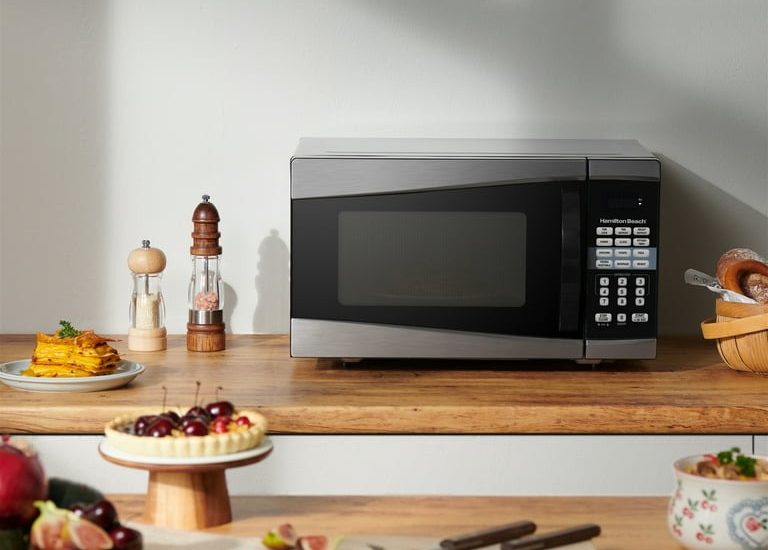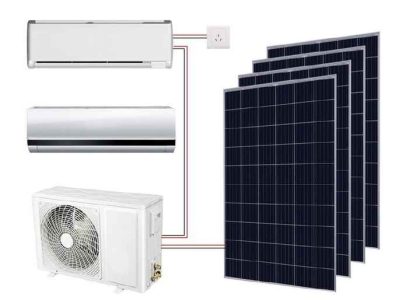When did microwave ovens come out? This question intrigues many who enjoy the convenience of modern cooking. The invention of microwave ovens revolutionized the way we prepare and heat food. The journey of microwave ovens is a fascinating tale that begins in the years following World War II. Their introduction to the market was not just a result of scientific innovation, but also a response to changing lifestyles that demanded faster and more efficient cooking methods. From their inception to widespread acceptance, microwave ovens have changed the culinary landscape significantly.
The Birth of Microwave Ovens

A Happy Accident: Percy Spencer’s Discovery
The invention of the microwave oven is truly one of serendipity. In 1945, while working with radar technology at Raytheon, Percy Spencer noticed something unusual. A candy bar in his pocket had melted during an experiment with a radar magnetron. Intrigued by this unexpected event, Spencer decided to investigate further. This accidental discovery led him to realize that microwaves could cook food quickly. Soon after, he famously experimented with popcorn and an egg, which further confirmed his finding. Thus, the concept of microwave cooking was born out of a simple mishap in a radar lab.
Patenting the Microwave: Raytheon’s Technological Milestone
Recognizing the potential of Spencer’s discovery, Raytheon quickly filed a patent in 1945 for a ‘Method of treating foodstuffs.’ This was a crucial step to safeguard their innovative cooking method. The patent marked a significant technological milestone for Raytheon, positioning them as pioneers in microwave technology. This move not only protected their invention but also paved the way for the future development and commercialization of microwave ovens. By securing the patent, Raytheon was able to further explore and refine the technology, leading to the microwave ovens we use today.
The Rise of Microwave Ovens in Households
From Radar Technology to Domestic Appliance
After its accidental invention, the microwave oven rapidly transitioned from radar technology to a vital household appliance. Initially, the first microwave ovens were bulky and very expensive, making them accessible mainly to commercial establishments like restaurants and hotels. However, by the late 1960s, manufacturers began to produce more compact and affordable models that were suitable for home use. This shift was largely due to advancements in technology that reduced production costs and increased the efficiency of microwave ovens.
As microwave ovens became more user-friendly and prices continued to drop, they became a common fixture in homes across North America. Their ability to cook food quickly with minimal supervision appealed to the busy lifestyles of many families. The convenience of microwave cooking—being able to heat or cook meals in minutes—revolutionized food preparation, making it simpler and faster.
The Global Expansion: Microwave Ovens Around the World
The popularity of microwave ovens soon spread beyond the United States. By the 1970s and 1980s, microwave ovens could be found in kitchens across Europe, Asia, and Australasia. This global expansion was spurred by continued improvements in microwave technology and a growing appreciation for its convenience.
Every year, it is estimated that over 30 million microwave ovens are sold worldwide. From being a luxury item or a novelty appliance, microwave ovens have evolved into an indispensable tool in kitchens around the globe. The quick and efficient cooking capability of microwave ovens has made them popular in fast-paced societies where time is often at a premium.
Today, the microwave oven is a testament to the unforeseen consequences of technological experimentation and innovation. Its widespread adoption underscores a universal desire for convenience in food preparation, illustrating how a simple accident can lead to a global revolution in cooking practices.
How Microwave Ovens Work

The Science Behind the Convenience
Microwave ovens have revolutionized the way we cook and heat food. At their core, these appliances use high-frequency microwaves to agitate water molecules in food. This agitation generates heat, which cooks the food quickly and effectively. Unlike traditional cooking methods that heat food from the outside in, microwaves penetrate into the food. This allows for faster cooking with less energy consumption. It’s an efficient transfer of energy directly to the molecules within the food.
The magic happens when you hit the ‘start’ button on the microwave. A device called a magnetron takes electricity from the power outlet and converts it into high-powered, 2.4 gigahertz (GHz) radio waves. These microwaves bounce around the oven’s interior until they are absorbed by the food. They cause water molecules to vibrate, producing thermal energy that cooks the food. This process is not only swift but also maintains more of the food’s nutrients compared to other cooking methods. Moreover, it can heat your meal uniformly, reducing cold spots that can occur with stovetop heating.
Magnetron: The Heart of Microwave Technology
When considering what powers a microwave oven, the magnetron is at the core of it all. The magnetron is the component that produces the actual microwaves. It was originally developed for radar systems during World War II. Percy Spencer’s accidental discovery showed that these microwaves had another practical use: cooking.
The magnetron works by harnessing the power of both magnetic and electric fields. Inside the magnetron, electrons get pushed by these fields to create microwaves. The design and reliability of the magnetron have improved over the years. Today, it’s more efficient and durable, allowing microwave ovens to become a kitchen staple worldwide. When did microwave ovens come out in the market as a household appliance, one might wonder. It was in the late 1960s when more compact and affordable models were released, making the incredible science of the magnetron accessible to the average person. Through continuous improvement and innovation, modern magnetrons operate with more precision and safety, further embedding microwave ovens into our daily lives and routines.
The Evolution of Microwave Design
Early Models to Modern Features
The transformation of microwave ovens from bulky, industrial appliances to sleek, modern kitchenware is noteworthy. Initially, these ovens were massive and primarily utilized in commercial settings due to their high costs and size. Early models in the 1950s, like the Raytheon Radarange, weighed over 750 pounds and stood nearly six feet tall, clearly unsuitable for domestic use.
By the late 1960s and 1970s, significant advancements in microwave technology allowed manufacturers to produce more compact and affordable versions suitable for home use. These newer models incorporated features such as preset cooking times, revolving glass trays to ensure even cooking, and variable power settings. The development of touchpad controls in the 1980s replaced dials and made operation simpler and more intuitive.
Today’s microwaves boast even more sophisticated features tailored to modern living. These include inverter technology that allows food to be cooked evenly at lower temperatures, grill functions that replicate traditional cooking methods, and smart sensors that adjust cooking time based on the moisture content of the food.
The Transformation Over the Decades
Over the decades, the design of microwave ovens has undergone substantial changes reflecting consumer needs and technological advancements. From the initially unwieldy models intended for reheating or simple cooking, today’s designs integrate seamlessly with modern kitchen aesthetics and offer diverse functions.
The 1990s saw a trend towards built-in models, which harmonized with the kitchen cabinetry, offering a sleek, unified appearance. The 2000s introduced stainless steel finishes, giving microwaves a high-end look that appealed to contemporary tastes.
Current models are not only about aesthetics but also prioritize environmental concerns and energy efficiency. Features like power-saving modes and eco-friendly materials reflect an awareness of sustainability issues. Innovations such as Wi-Fi connectivity and voice control via virtual assistants like Alexa or Google Home are becoming standard, showcasing how microwave ovens continue to adapt to the latest in digital home management systems.
This continuous evolution from simple reheating devices to sophisticated cooking appliances highlights the microwave oven?s resilience and its ability to adapt to the changing landscapes of technology and design preferences.
Microwave Ovens in Popular Culture

The Kitchen Revolution: Changing Culinary Practices
The microwave oven has had a profound impact on culinary practices worldwide. It revolutionized the way we cook, creating a wave of new possibilities in the kitchen. Easy-to-make popcorn, defrosting frozen foods swiftly, and reheating leftovers without losing flavor became the norm. Recipe books began to include microwave-specific instructions, catering to the appliance’s unique cooking style. Convenience took the front seat in meal preparation, and the microwave stood as a symbol of modern culinary efficiency.
Microwaves and the Fast-Paced Lifestyle
Microwave ovens cater perfectly to the fast-paced lifestyle of modern societies. For people always on the move, the ability to heat a meal in minutes is invaluable. The appliance fits well into packed schedules, allowing for a quick bite between appointments or before running errands. Students, working professionals, and busy parents rely heavily on this time-saving device. It’s clear that microwave ovens support the demands of today’s fast-paced living, offering a quick, practical solution to meal prep challenges.
The Impact of Microwave Ovens on Society
Convenience vs. Nutritional Debate
Microwave ovens changed how we view food preparation. The quick and easy operation provided a clear advantage for people with busy schedules, but this convenience sparked a debate. Some question if the speed compromises nutritional value. However, studies suggest microwaving can preserve vitamins better than some traditional cooking methods. The crux of the debate lies in the balance between the demand for fast food processing and maintaining a healthy diet. Despite concerns, the efficiency of microwave ovens often proves essential in today’s fast-paced world.
The Role in Modern Day Kitchens and Food Industry
Microwave ovens now play a significant role in our daily lives. They found a home in nearly every kitchen, aiding in simple tasks like warming milk to more complex cooking. In the food industry, they speed up service and improve efficiency in fast-food establishments and cafes. This appliance became a cornerstone of modern culinary arts. It allows chefs to innovate and households to save time. Whether it’s reheating leftovers or making a quick snack, microwave ovens support both experienced cooks and those less familiar with the culinary arts. Their role in food preparation and time management is now undeniable.
Future of Microwave Technology
Innovative Features and Smart Appliances
The future of microwave ovens sparkles with technological innovation. We’re seeing microwaves that can talk to our smart home systems. Features like voice control are now merging with cooking appliances. Imagine telling your oven to start while you’re still lounging on the sofa. In-built scanners may soon identify your food and auto-select the best cooking mode. Wi-Fi connectivity is not just a buzzword – it’s becoming a standard in kitchen tech. These smart appliances aim to make cooking even more effortless and precise.
The Environmental Footprint and Energy Efficiency
There’s a growing demand for eco-friendly appliances. Microwave ovens of the future will likely boast improved energy efficiency. They may use less electricity and help reduce carbon footprints. Some might even come from recycled materials, pushing sustainability forward. Companies are focusing on making ovens that last longer, cutting down waste. Consumer awareness is driving this shift towards more energy-efficient and environmentally sound cooking options. Eventually, the aim is to blend convenience, innovation, and care for the planet in every microwave made.





